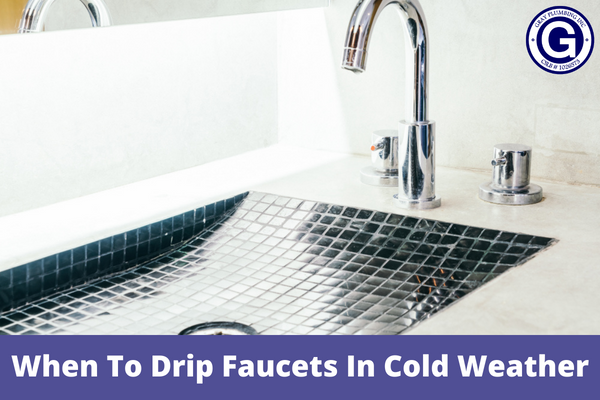Many consider turning our faucets on a drip to avoid freezing in cold weather. Because moving water freezes slower than standing water, a water drip can help keep pipes from freezing. But when is the most appropriate time to do so? Let’s start with the fundamentals.
What Exactly Are Dripping Faucets?
Moving water is less vulnerable to freezing than still water. If your pipes are constantly dripping, this can help keep them from freezing. The water doesn’t need to be warm for this to work. The goal of this method is not to melt already-frozen ice but to keep water from freezing in the first place. Because your home’s cold and hot water is most likely separated, you only need to be concerned with the cold water plumbing.
When Are You Going To Let Your Faucets Drip?
When the temperature falls below 20 degrees Fahrenheit (-6 degrees Celsius), at least one faucet should be turned on. Keep an eye on pipes that remain in attics, garages, basements, or crawl spaces because temperature levels in these unheated interior areas often mimic outside temperatures.
The pipes in basements, crawl spaces, attics, kitchen cabinets, and garages will cause the most problems when breaking, bursting, and freezing. This is because they are exposed and lack the insulation that other pipes in your home have.
How to Avoid Frozen Pipes
Here are some helpful hints to keep your pipes from freezing:
- Before winter, drain, remove, and store your outdoor hoses.
- Examine all of your other water supply lines, both inside and outside your house. In unheated areas, insulate any hot or cold pipes (and you may even want to consider having a plumber do this for you).
- Seal cracks and any penetrations into the building and windows and doors as part of your regular pre-winter maintenance. Checking your insulation and adding more as needed protects against frozen pipes, as does keeping your heat sources operational to avoid shutdowns.
- After removing stored chemicals from cabinets and storing them in a secure location out of reach of children, leave your kitchen and bathroom cabinets open to allow warm air to reach the plumbing.
- In extreme cold, ensure your heating system and other heat sources are operational. Check potential problem areas such as basements or attics, especially if the pipes are in contact with an outside wall.
- Allow cold water to drip from a faucet served by exposed pipes if temperatures drop significantly. This prevents the pipes from freezing.
Final Thoughts
Running water keeps pipes from freezing, but only partially. While the water remains liquid while flowing, it can freeze at extremely low temperatures if left inside the pipe for an extended period. When a faucet drips, it relieves pressure in the pipes by allowing water to drip out that has accumulated due to freezing temperatures.
If you have any questions or are concerned about the condition of your plumbing, please contact Gray Plumbing. The sooner we inspect your plumbing, the sooner we can stop or avoid a major disaster in your home. We have a lot of experience with treating pipes that have been damaged by weather.


